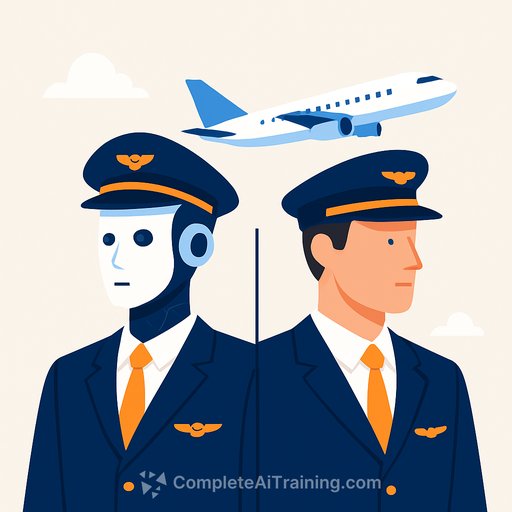Can Artificial Intelligence Rival Human Intuition in Managing Air Traffic?
Leaders everywhere are asking the same question: where does AI add real value, and where do we keep humans firmly in charge? Air traffic control is a sharp test. It's high stakes, time-sensitive, and unforgiving to error.
Patrick Arnzen, CEO of Thrust Flight, puts it plainly: "It takes years to develop the intuition needed to do this job well-not just quickly, but also safely." That judgment, built through training and experience, is tough to code. The takeaway for managers: AI can assist, but full autonomy is a leap with serious downside risk.
Why the push for AI now
Recent pressures have intensified the debate. Reports cite a U.S. controller shortage causing broad disruptions in October 2025 and a fatal collision at Washington Reagan National Airport in January that claimed 67 lives. As flight volumes grow and infrastructure ages, calls to automate are getting louder, including from startups advocating controller-grade AI.
The UK is already redesigning its airspace to cut delays and emissions, with the UK Airspace Design Service slated to be fully operational by year-end. That said, legacy systems, regulatory hurdles, and cost drag on implementation speed.
Where AI fits today
AI already supports routine, bounded tasks-weather tracking, route optimization, demand prediction, flow management. It excels at pattern recognition across massive data sets and surfacing options humans might miss under pressure. The model that works now: AI as decision support, humans as final authority.
Barriers leaders should expect
- Regulatory friction: Aviation is highly regulated, and certification for safety-critical roles takes time. Proving reliability under rare edge cases is the hard part.
- Legacy infrastructure: Old systems, patchwork upgrades, and vendor lock-in limit what you can deploy and how fast you can integrate it.
- Operating culture: Controllers are trained for safety first. Adoption rises when systems prove they reduce workload without creating new failure modes.
- Cost and equity: Upgrades hit smaller airports and developing markets hardest-both in cash outlay and change management.
Management playbook: a practical path to hybrid control
- Start with assistive use cases: Deploy AI for predictions, alerting, and recommendations. Keep a human on the loop for all separation-critical decisions.
- Shadow mode first: Run AI in parallel to human operations. Compare decisions, measure impact, and only then move to limited live use.
- Define risk thresholds: Set clear criteria for handoffs, overrides, and system downgrades. Practice failure drills routinely.
- Data discipline: Invest in clean historical and live data pipelines. Poor data will sabotage trust and outcomes.
- Human training: Upskill controllers and supervisors to interpret AI output and challenge it when needed.
- Procurement with proof: Require vendors to supply edge-case testing, audit trails, and continuous monitoring-not just demo metrics.
- Governance: Establish accountability for model updates, incident review, and regulatory reporting from day one.
Metrics that matter
- Safety: Loss-of-separation incidents, go-arounds, and near-miss rates.
- Throughput and delay: Movements per hour, average delay minutes, and holding patterns.
- Workload: Controller task load and cognitive strain during peak periods.
- Quality of recommendations: Acceptance rates of AI suggestions and reasons for override.
- Cost-to-serve: TCO of systems versus delay cost and fuel burn savings.
Budget and timeline reality
Plan for staged investments: data and integration first, assistive tools next, limited autonomy last. Tie each phase to measurable safety and efficiency gains before moving on. For smaller airports, shared services and cloud-based deployments can keep costs manageable.
Global signals to watch
- FAA NextGen initiatives for technology baselines and integration standards.
- UK airspace modernisation plans for a view of large-scale redesign and sequencing.
Bottom line for leaders
AI will raise the floor on efficiency and consistency. Human judgment will keep the ceiling from collapsing when the unexpected happens. The smart strategy is a hybrid system that earns trust incrementally, proves value with data, and never outsources final accountability for safety.
If your team needs to build AI fluency for these decisions, explore focused learning paths for managers at Complete AI Training.
Disclaimer: This article reflects analysis and opinion based on reported sources and is not investment advice.
Your membership also unlocks:






